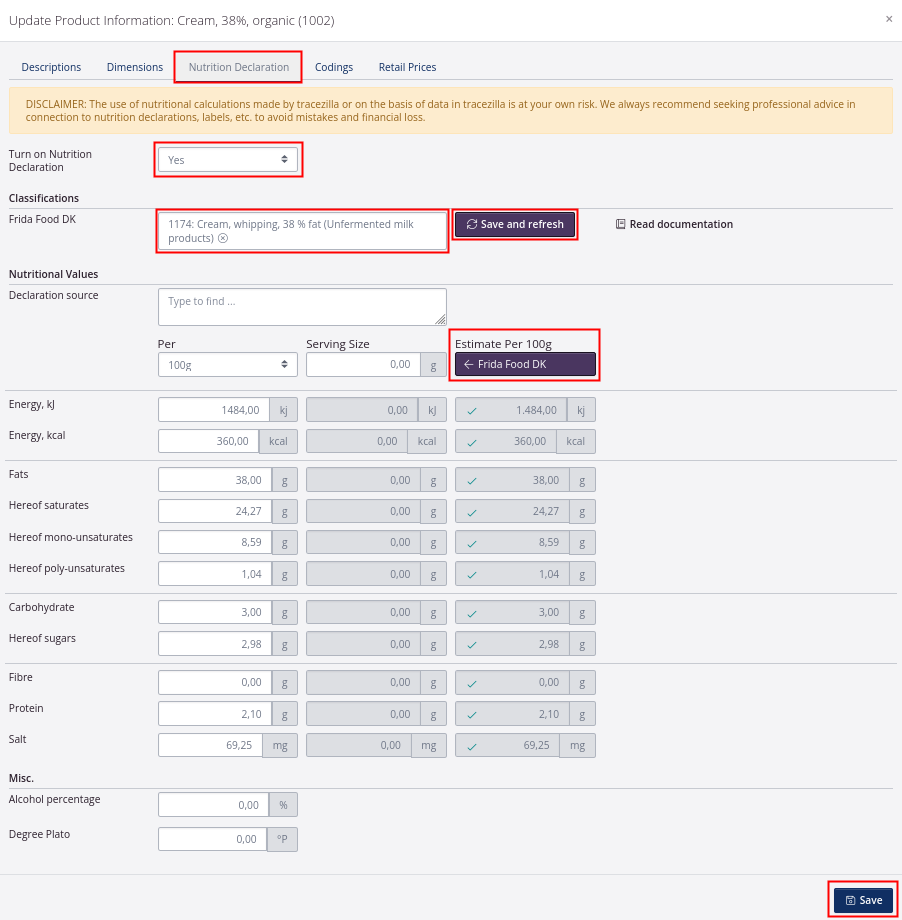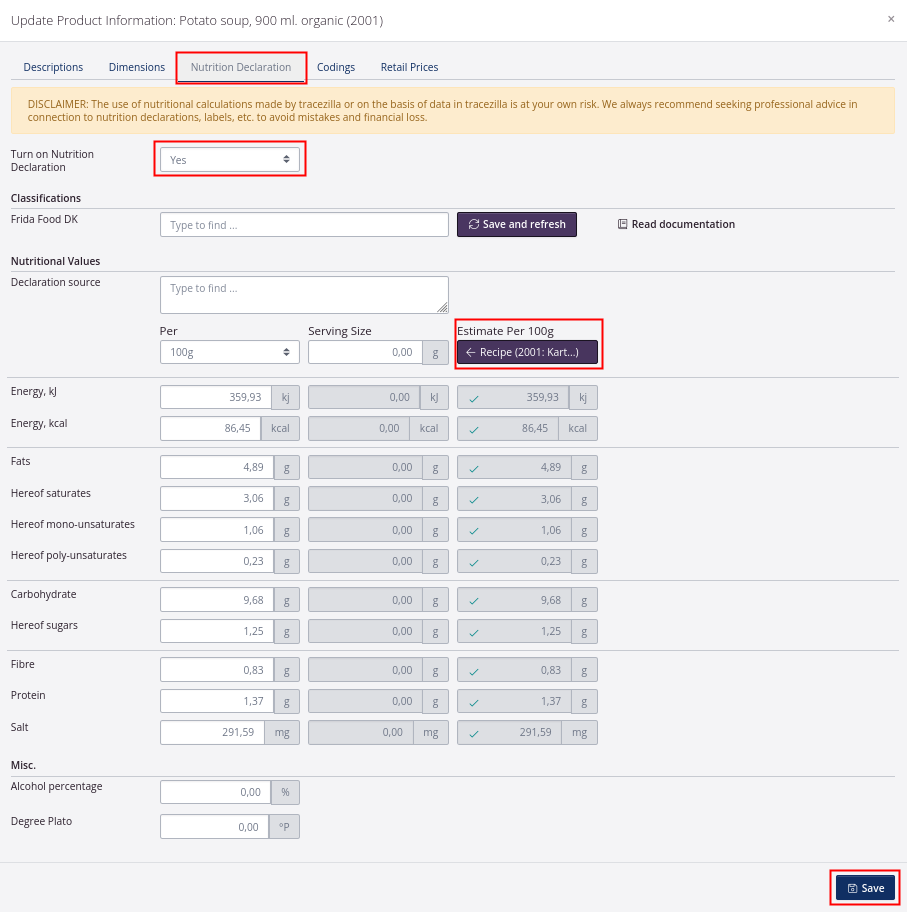Nutritional values for stock keeping units
Prepackaged foods must be labelled with specific information. Among others, the nutritional content of the food must be disclosed. It is mandatory to state the energy content both in kilojoules (kJ) and kilocalories (kcal) as well as the content of fats, saturated fatty acids, carbohydrates, sugars, proteins and salt, all in grams. The mandatory information can be supplemented with information concerning other nutrients, e.g. dietary fiber and unsaturated fatty acids.
In tracezilla, the nutritional content of finished goods can be calculated on the basis of the raw materials used, using data from the DTU Food Institute food database, Frida Food. The nutritional content can also be registered directly on a finished good if, for example, analyses of the nutritional content of the product have been carried out.
Create information on nutritional content of raw materials
Nutritional content must be created for each individual raw material, and you are responsible for ensuring that correct data is used in accordance with the Danish Veterinary and Food Administration’s requirements.
Go to Stock Keeping Units under Warehouse in the top menu and find the relevant raw material. Click on the three dots in the blue field on the far right, click on Product Information, and then select the tab Nutrition Declaration.

Start by turning on nutrition declaration. Then search for the relevant raw material in the field under Classifications. Press Save and refresh when the correct product has been selected, and then Estimate Per 100g - Frida Food DK. The data from Frida Food will then be imported to tracezilla.
The selection of goods in Frida Food is wide, but not complete. Therefore, there may be cases where the desired raw material cannot be found in the database. If this is the case, data can be entered manually in the fields under Nutritional Values. If values from other sources than Frida Food are used, the data source can be stated in the Declaration source field. Alternatively, it may be relevant to analyse the nutritional content of the finished product and record this directly on the finished product. Read about finished goods below.
Press Save.
Create information on nutritional content of finished goods (and intermediate goods)
In tracezilla, the nutritional content of finished goods can be calculated based on the raw materials used, if these are linked to the finished good via a recipe. Read more about recipes here.
Go to Stock Keeping Units under Warehouse in the top menu and find the relevant finished good. Click on the three dots in the blue field on the far right, select Product information and then the tab Nutrition declarations.

Start by turning on nutrition declaration. When the finished good is linked to a recipe, three columns will be visible along with the the purple button Estimate Per 100g - Recipe (xxxx: recipe name). Press this button to calculate the nutritional content based on the data recorded on the raw materials used.
Be aware that the calculation of the nutritional content of the finished good does not fail, even if information is missing on the raw materials used. You will still receive data but the calculation is not valid in this case. It is possible to check whether all relevant raw materials are included in the recipe and thus also in the calculation of the nutritional content by using the report Nutrition Breakdown under Production in the top menu.
It is also possible to calculate the nutritional content for a serving size. This is done by entering the relevant number of grams in the field Serving Size and pressing the Estimate Per 100g - Recipe (xxxx: recipe name) button.
If the finished good is not linked to a recipe, it is possible to use data from Frida Food instead or enter data manually, e.g. average values from analysis results.
Keep in mind that the Danish Veterinary and Food Administration have defined various requirements for the data used. Consult their website for further information.
Press Save.
The nutritional content of intermediate goods are calculated the same way as finished goods.
Use of nutritional data
The calculated or analysed nutritional content must be presented in accordance with the Danish Veterinary and Food Administration’s rules for rounding values. Read more on their website.